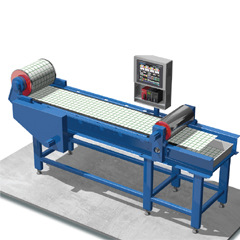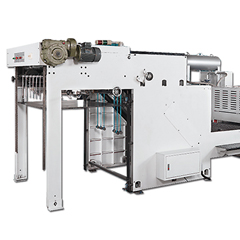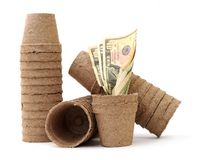Packaging materials is a term widely used for covering and wrapping. Its main purpose is to protect produce from environmental effects during its journey from factory to a consumer. Advancement in covering material in real life is the key for a longer life of produce while they wait to be consumed. These stuffs are a prerequisite demand of all edible and nonedible items. It gives an excellent protection, superb keeping and presentable quality.
It is not a modern term. In fact it dates back to prehistoric times when humans tried to conserve their rations for summers. Leaves were mostly employed for this purpose. Evolution gave wooden boxes, stem baskets and wine-skins for replacing leaves. As the aesthetic sense of people got matured, they went for silver and gold to get the same results. Now it has its arresting accessories as able-bodied such as trays, cups, close wraps, liners, and pads which advice to attenuate the aftermath aural the wrapping container.
They are also differing amongst themselves on the basis of colors, shapes, embroidery and attractive shining. Modern day wrapping dates back to the advent of paper in this industry. The paper then took the form of paper boards and fiber boards. These eventually turned out to be cartons. In addition the aluminum and altered added types of artificial plastics were additionally in-cooperated to improve its functionality and beauty.
The plastic remained as the stream of waste for many years just thrown in the trash … and in many countries it still is. More recently in developed nations, recycling programs have shown up which divert some percentage of these discarded packaging materials from landfills to recycling plants who convert the materials into something usable again. Recycling is a bit of a misnomer though because with plastics for example, the material is actually degraded or “down-cycled” during the recycling process.
Whether online or in a grocery market, consumers encounter a product through its packaging. Thus, the packaging design can make a difference in the sales target. Thus, essential food packaging designers are marketers themselves. Sometimes, they can produce packaging designs that eliminates the competition shall by the look of it.
So what’s the revolution that is going on in food packaging design? You might have guessed already: Its revolution of materials. And from cardboard to plastics nothing will ever be the same again.
One shift is the use of sustainable wood fibre and post consumer waste for cardboard. This is good news for our forests which have been under attack for wood pulp and timber for centuries. Keep in mind that our clean air and water mostly originate from our wild lands so it’s important to keep them in good shape.
Next is cardboard products made from recycled fibre. This is called “post consumer waste” and many paper and card stocks now contain some percentage of recycled material. When you couple sustainably harvested fibre with cardboard made from varying percentages of post consumer waste and we start to see some very real change in this industry.
Beyond aesthetics, profitable food packaging designs are measured by their food preservation technology. Today, buyers prefer food that are kept fresh, especially that adults are more conscious about diet, health and fitness. Among the preferred food packages are vacuum pouches with its variations such as laminated deli pouches, gas flush packaging, boilable pouches, metalized gold pouches and fancy pouches.
In the world of plastics the action is decidedly more glamorous. New polymers (plastics) are showing up on our shelves which are made from corn, potato and even mushrooms. That’s right. The oils from these vegetables are turned into plastics with very special properties. One of the greatest advantages of these modern plastics is they biodegrade rapidly once they are disposed of. Unlike plastics made from crude oil, they biodegrade into mostly harmless organic particles which are easily broken down into the environment.
A survey among food packaging suppliers reveals the top food packaging designs for the last century.
1. Microwaveable Packaging
The invention of the microwave oven in 1967 paved the way for one of the most convenient food preparations today which saves time and money. A range of microwaveable packages include cartons, pouches, bags, tray, and plastic containers for an array of meal preparations including popcorns and cakes.
ConAgra Foods and Phoenix Packaging’s Orville Redenbacher’s Popcorn Pop Up Bowl packaging format has received Gold in Packaging Excellence and Technical Innovation at Flexible Packaging Achievement Awards 2012. A Berry Plastics Corporation’s Microwaveable product “One Size Fits All” Packaging received Gold for its Technical Innovation.
2. Sachets And Pouches
Sachets and pouches are low-cost and highly efficient food packaging materials that replace much of the tin-can items. Lighter and easier to open, they are used for practically all food products.
Plastic Packaging Technologies Blue Bones Small Natural Dental Chew Bones received Gold in Packaging Excellence, Printing Achievement and also Technical Innovation at Flexible Packaging Achievement Awards 2012.
3. Tetra Pak
A pioneer in aseptic package, Tetra Pak works by sterilizing food products prior to filling with UHT (Ultra High Temperature) thus extending shelf life to more than six months. Recent innovations in color, shapes, and resalable caps make this more attractive to consumers.
4. Modified Atmosphere Packaging (MAP)
MAP or Modified Atmosphere Packaging is considered by many as a major step forward in extending the shelf life of fresh food products by substituting the atmospheric air inside a package with a protective gas mix.
5. Soda Cans
The use of aluminum cans in the middle of the last century brought with it a new innovation: the ring pull cans, which eventually developed into stay tabs. They are not only convenient, but full recyclable thus environmentally friendly.
6. Plastic/PET Bottles
Where will we be without bottled waters? Although it looks simple, this food packaging material, which is also used for juices and energy drinks, have evolved through the years by using polyethylene terephthalate (PET). This makes the bottles lighter, easier to mold, and more shatterproof than the previous design.
7. Childproof Bottles
Parents benefit a lot from the development of childproof bottles which until now continue to baffle children. This is easier for parents to store food items which might be harmful for kids. However, it has been found out that highly inquisitive toddlers always find a way to open these bottle caps.
8. Frozen Food Packages
Between buying fresh food and those in tin-cans, you have another option – the frozen food. Considered as the first large-scale food packaging design, frozen food packages not only extend shelf life but provide solutions to storage problems. FreshCase Packaging for Fresh Red Meat and Heinz Dip n Squeeze™ Ketchup are known for its wet food packaging.
When you consider that billions of products are sold every single day packaged in cardboard or plastic then it’s definitely a big deal when positive change happens in these industries. We’re looking forward to seeing what other innovation is yet to come in packaging supplies and materials.
If you are considering a food packaging design then consider using these new materials. They aren’t only better for the planet, but they are becoming the standard for many eco-savvy consumers who expect more from their favorite brands. To connect with this modern breed of consumer (and get their dollars) you’ll need to show that your values align with theirs.
Today, food packaging designers are filled with excitement and enthusiasm. There are more than one thousand packaging materials which are being employed to extend the life and quality of products. This achievement is because of new updated technologies. All these are playing a great role in our environment saving efforts as they are biodegradable and non harmful for environment.





